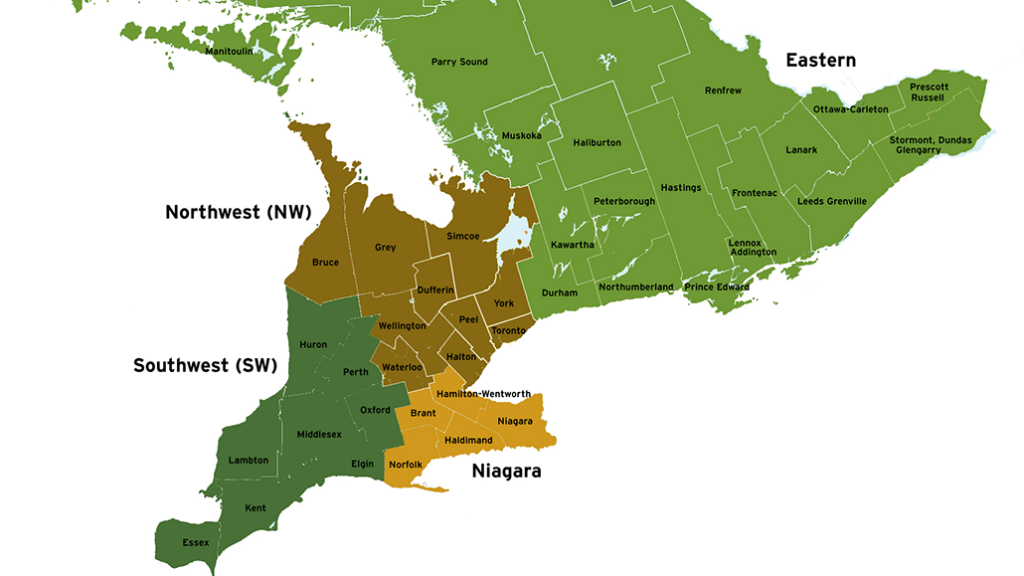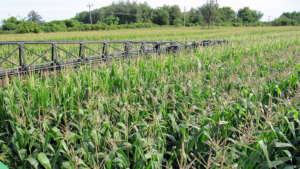Ontario’s wheat quality
ANNUAL SURVEY PROVIDES INDUSTRY INSIGHT

THE GRAIN FARMERS OF ONTARIO Market Development team conducts an annual Wheat Harvest Survey by collecting samples from the four major regions of Ontario — southwest, Niagara, northwest, and east. Once these samples are received from elevators, they are graded by the Grains Analytical Test Laboratory, a joint venture between SGS Canada Inc. and Grain Farmers of Ontario, and results are updated and posted online biweekly on the Market Development section of the Grain Farmers of Ontario website. The survey and testing results are an important resource for members of the industry, including farmer-members, elevators, and millers.
THE 2022 WHEAT CROP OUTLOOK
This year’s winter wheat crop is smaller than average due to the delayed soybean harvest and wet planting conditions during last fall’s harvest. According to Statistics Canada, 930,300 acres of winter wheat were seeded in autumn 2021 compared to 1,122,800 acres seeded in 2020. Despite challenging and, in some cases, late planting conditions, initial results from the 2022 Wheat Harvest Survey have indicated very good quality, with over 99 per cent of samples grading at a No. 2 or above. Samples this year have shown high test weights with moisture, protein and falling number all within ideal ranges. The first few rounds of samples were harvested before the end of July when most of the province experienced extreme heat and dry weather conditions. The dry conditions led to some kernels becoming ‘weathered’ with the bran appearing lighter in colour. Luckily, this was a minor quality factor and did not cause downgrading below a Grade 2. Later in the season, the province had several days of rainfall pushing moisture percentages in between the 17 – 19 per cent range, but no other major issues were detected in the samples received early in the survey.
MILLERS AND THE WHEAT HARVEST SURVEY
Once all samples are graded, composites of each class are formed for additional testing. The experts at the Grains Analytical Testing Laboratory perform multiple complex tests that measure different quality indexes such as starch damage, gluten, and baking quality, among other analysis methods. Millers and end users use the Wheat Harvest Survey and the composites that go along with it for three reasons:
- To support their insight into the level of quality to expect with the harvested crop, especially as crops change from old to new crop quite quickly.
- To compare against previous years’ quality to determine necessary modifications required by bakers. Millers need to be able to advise their clients on any substantive quality changes and adapt their guidance to help customers to achieve their baking goals. Millers need to prepare the bakers for any changes, so they are ready for when the flour is received.
- The survey divides the province into four different regions for several reasons — one being that millers need to know where to buy what they need. There is a difference in quality across regions that are affected by different grading factors, diseases, etc., so millers need to establish a procurement plan.
The work on the Wheat Harvest Survey allows us to open a dialogue on the quality of the new crop for both international and domestic customers. Every year, the Market Development team and SGS operations manager Paolo Santangelo participate in inbound and outbound trade missions, giving new and existing customers confidence and encouragement for sourcing wheat from Ontario farms.
We use data from the survey to help explain changes between old and new crop wheat and the impact that will have on end users. Millers anticipate changes every year, as they are aware that many different factors such as weather and crop management can impact the quality of the grain year after year. These meetings allow us to support them and continue to ensure we tell the story of Ontario’s quality.
GRAIN FARMERS OF ONTARIO’S USE OF THE SURVEY
The Wheat Harvest Survey also gives Grain Farmers of Ontario key data points which allow us to track the quality year over year in each of the four regions. The 2022 season started with great quality, so Grain Farmers of Ontario have not had to rely on the survey to address issues. In other years, however, the survey allows us to see where issues are within the different regions and how we can address them with customers, variety development and agronomists.
Hayley Micallef is the market development coordinator at Grain Farmers of Ontario. •

























